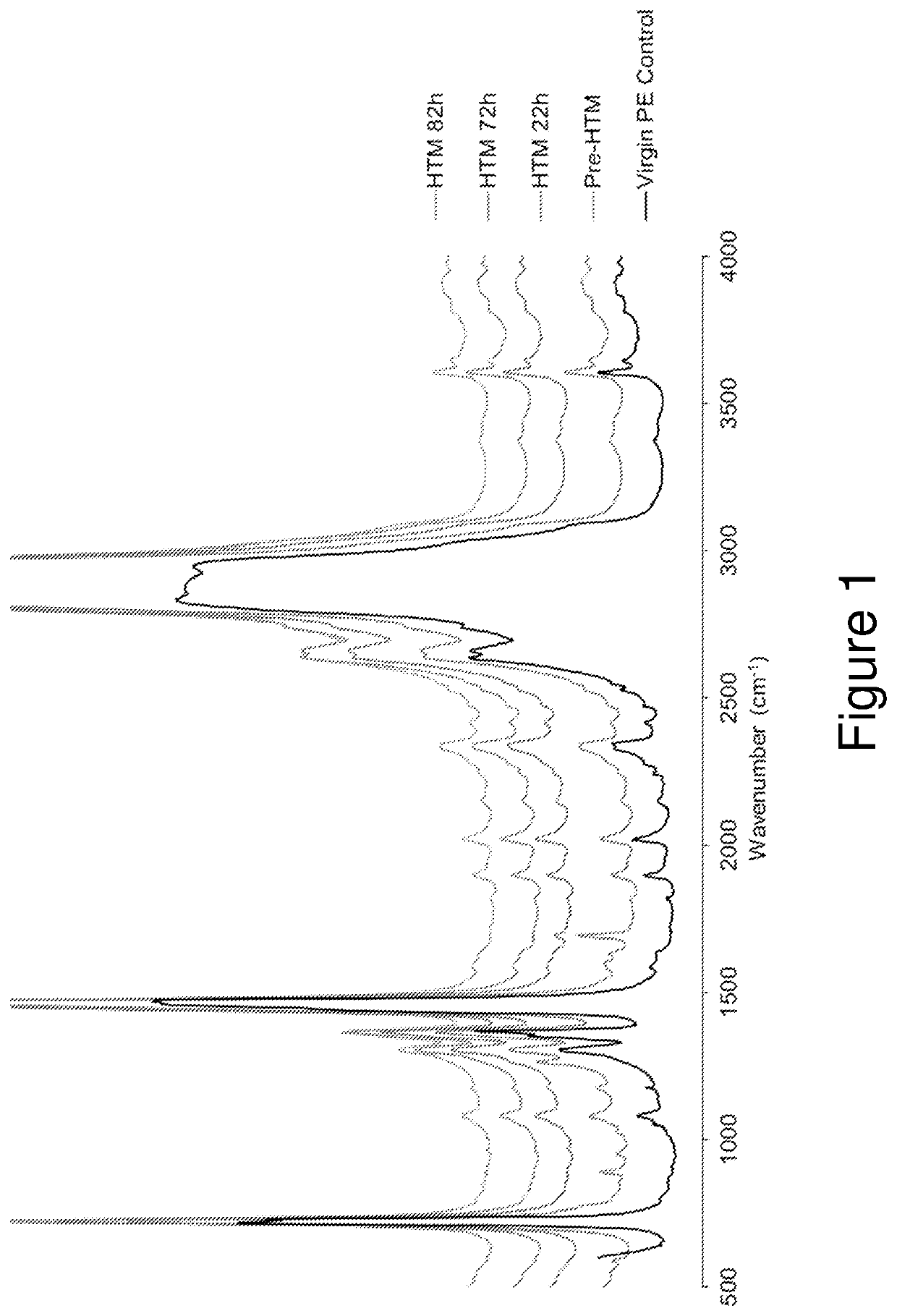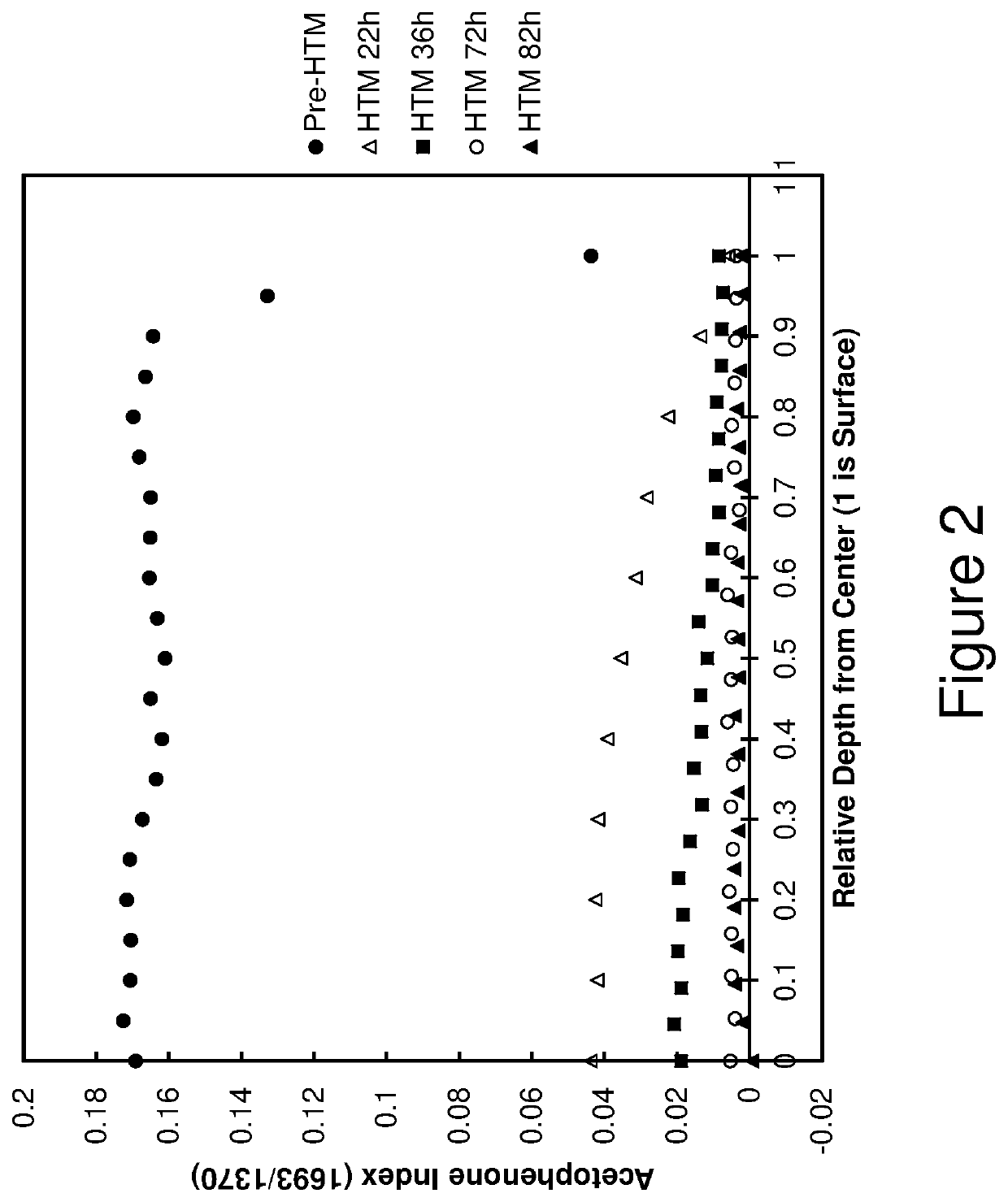Di-cumyl peroxide crosslinking of uhmwpe
a technology of dicumyl peroxide and polymer, which is applied in the field of high temperature melted polymer materials for manufacturing peroxide crosslinking, can solve the problems of high cost, volatile by-products, and long removal time of acp, so as to reduce the concentration, increase the toughness of the material, and reduce the wear resistance of the polymer.
- Summary
- Abstract
- Description
- Claims
- Application Information
AI Technical Summary
Benefits of technology
Problems solved by technology
Method used
Image
Examples
example 1
to Avoid Dimensional Instability
[0022]We discovered that if the molded articles that are subjected to high temperature melting are cooled at a rapid rate the implants machined from these said articles display some degree of dimensional instability. That is, implant machined after the heat treatment could lose their dimensional tolerances. To minimize the dimensional changes after machining, heat treated article is subjected to slow cooling. This could be achieved by using an extremely slow cooling rate. Another way of achieving a dimensionally stable machined implant is to cool the article to a temperature above the crystallization temperature, followed by soaking / holding at around that temperature until the temperature is somewhat uniform within the article, followed by cooling to a temperature at or below the crystallization temperature, followed by soaking holding at around that temperature until the temperature is somewhat uniform within the article, followed by cooling to room ...
example 2
one Quantification with FTIR
[0023]The blocks are cut in half with a band saw, and thin films (˜150 μm in thickness) are cut from the newly exposed surface using a sledge microtome for Fourier Transform Infrared (FTIR) analysis. A thin film is loaded onto an FTIR spectrophotometer with a microscope attachment (670IR / 620, Varian Inc., Palo Alto Calif.), and sequential 100 μm2 square sections of the film is analyzed from 4000-400 cm−1 wavenumbers at 8 cm−1 resolution from the edge of the thin film that corresponded to a free surface of the original block to a location on the thin film that corresponded to the body center of the original block. Acetophenone levels are quantified and expressed as an ACP index calculated by integrating the absorbance over 1674 cm−1-1712 cm−1 (ACP peak) and subtracting the baseline below that absorbance peak. The ACP indices are normalized to the polyethylene absorbance over 1330 cm−1-1390 cm−1 after subtracting the baseline below that absorbance peak. The...
example 3
operties and their Optimization
[0025]The target properties of HTM treated peroxide crosslinked UHMWPE / vitamin-E blend are as follows: (i) ACP index 43 MPa; (iv) YS>17 MPa; (v) POD70 kJ / m2. One optimum material will need to have sufficient acetophenone by-product removed by bringing the ACP index to below 0.03. While higher temperatures and longer durations during HTM processing increases the removal of ACP, it also adversely affects other properties, such as increasing wear rate. Elongation at break (EAB) is directly proportional to wear rate; therefore, EAB values below 400% are preferred to keep the wear rate low. For example, the 72 hr HTM cycle lowers the ACP index to below 0.03 and keeps the EAB also below 400%. In contrast the 82-hr cycle results in EAB values above 400% and compromises the wear rate.
PUM
| Property | Measurement | Unit |
|---|---|---|
| elongation | aaaaa | aaaaa |
| temperatures | aaaaa | aaaaa |
| half-life temperatures | aaaaa | aaaaa |
Abstract
Description
Claims
Application Information
 Login to View More
Login to View More - R&D
- Intellectual Property
- Life Sciences
- Materials
- Tech Scout
- Unparalleled Data Quality
- Higher Quality Content
- 60% Fewer Hallucinations
Browse by: Latest US Patents, China's latest patents, Technical Efficacy Thesaurus, Application Domain, Technology Topic, Popular Technical Reports.
© 2025 PatSnap. All rights reserved.Legal|Privacy policy|Modern Slavery Act Transparency Statement|Sitemap|About US| Contact US: help@patsnap.com


